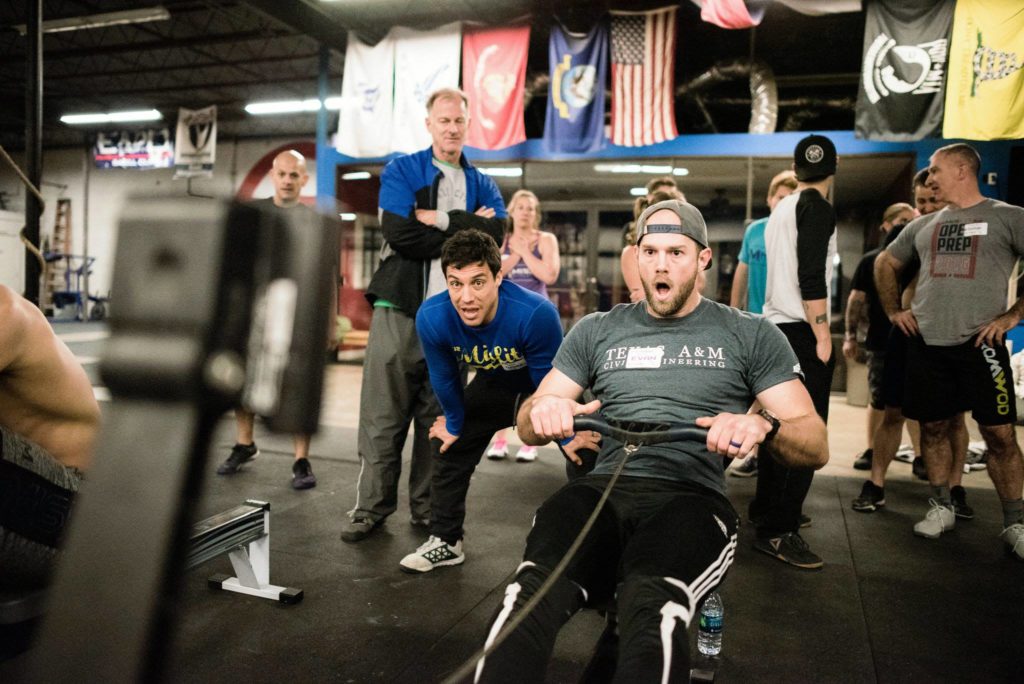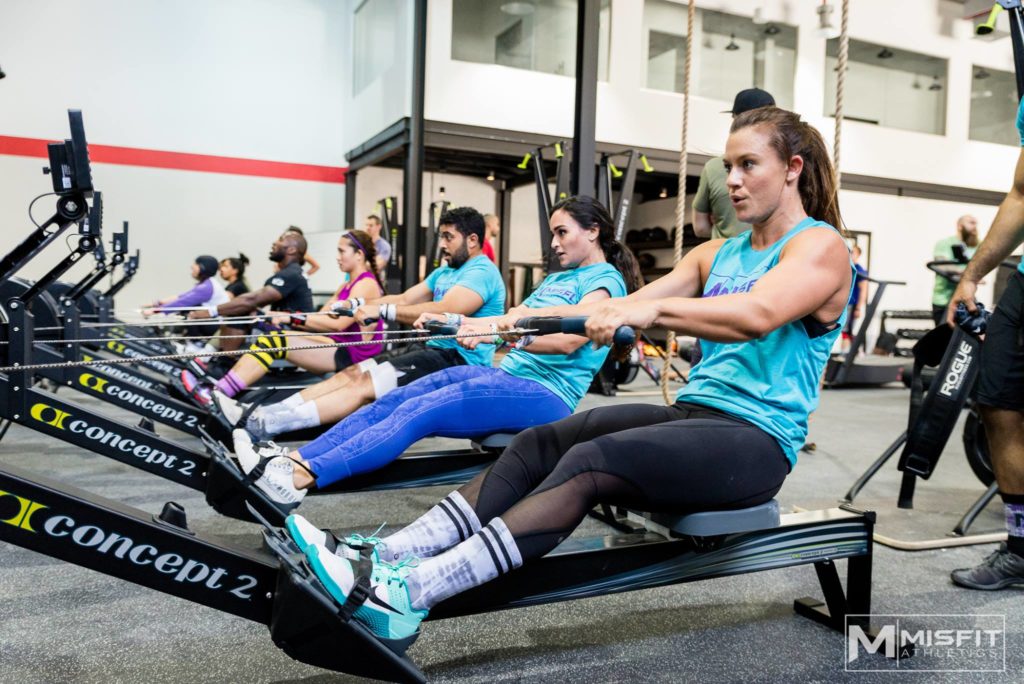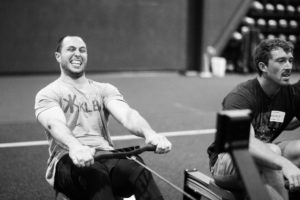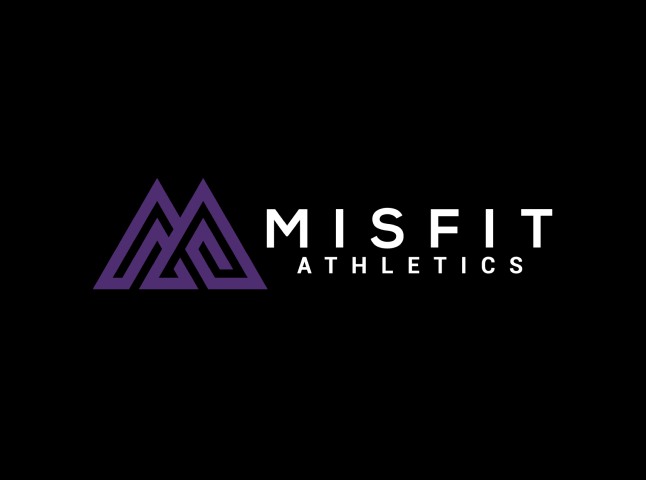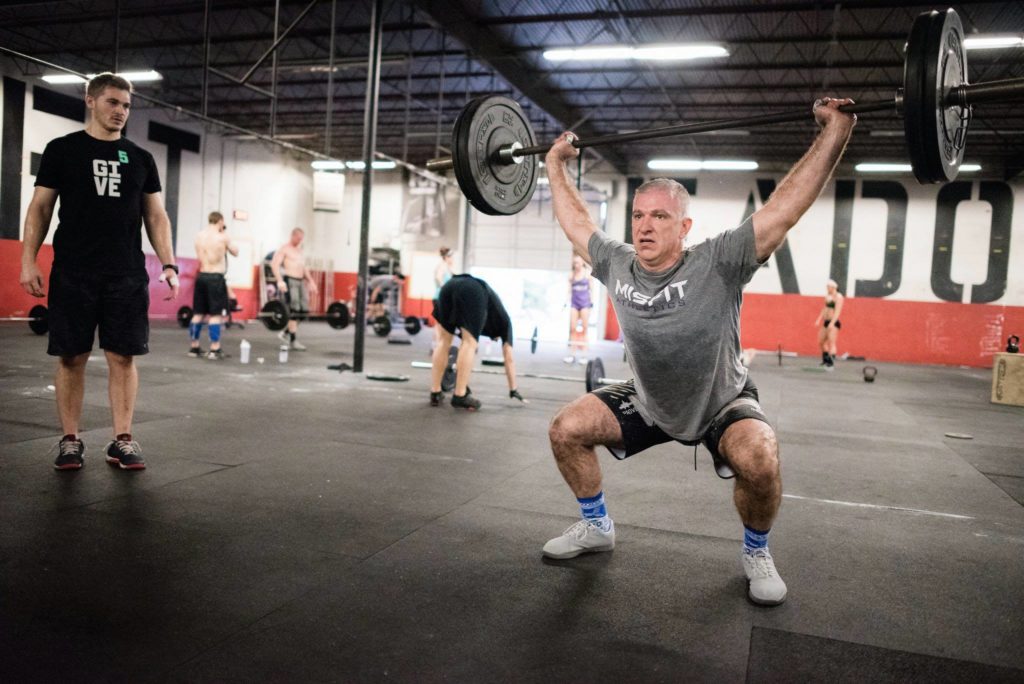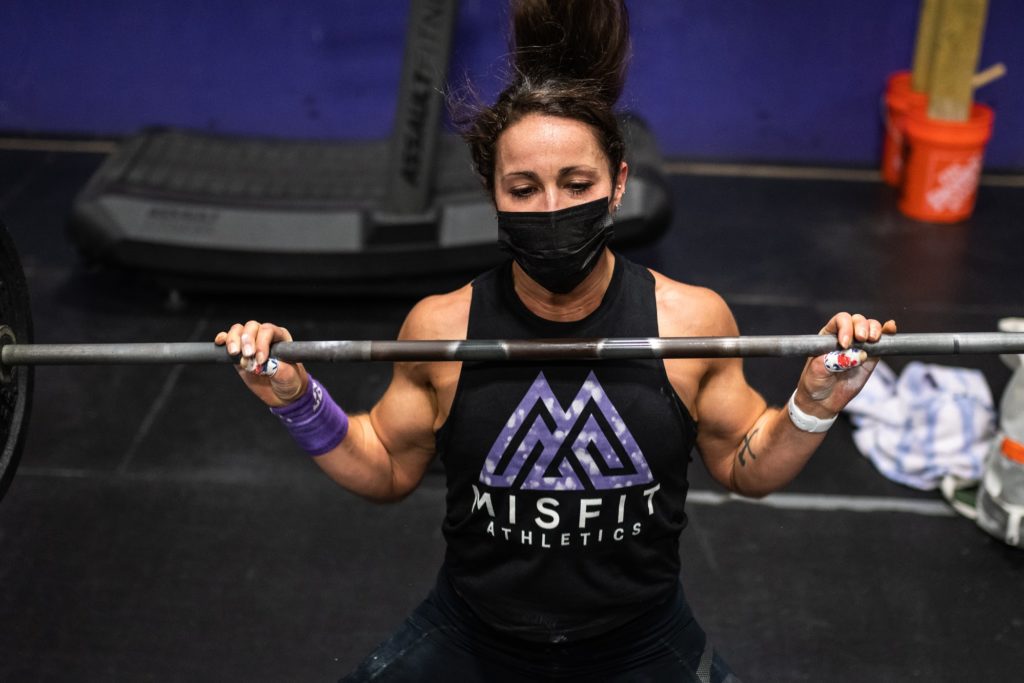2 Methods to PR Your 2K Row in Just 10 Days – Case Study
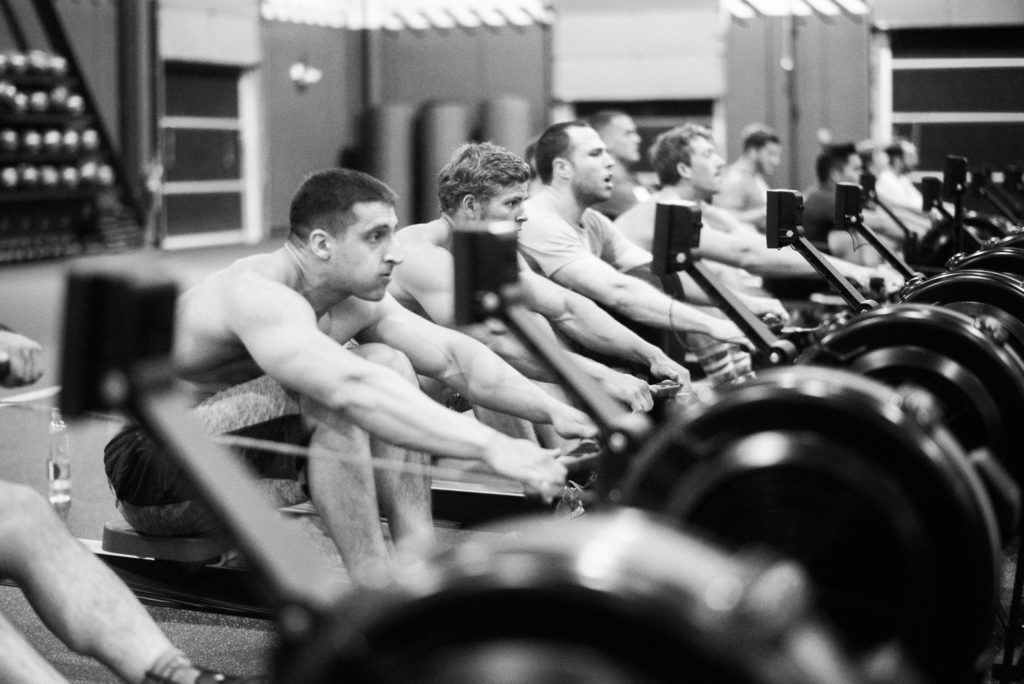
2 Methods to PR Your 2K Row in Just 10 DAYS – A Case Study by Misfit Athletics
Many of us consider rowing a weakness and experience an adverse reaction when it comes up in a workout. Often, fear or lack of confidence can hold you back from achieving your fitness goals. At Misfit Athletics we have long believed that you do not have the right to label something as a weakness until you have spent adequate time and effort training that movement, especially when it comes to something that relies more on effort and toughness than skill or ability. It is from this belief that we came up with the idea of “Weakness Warm-Ups”.
We often address these types of “weaknesses” by simply forcing the athlete to spend more time doing that movement until it is no longer a weakness. Weaknesses such as burpees, running, rowing, or assault bike are added into the warm up on a regular basis. During this time, we expect that athletes develop a higher level of comfort with the movement as well as new coping mechanisms that allow them to be convinced they can improve. We have seen a great deal of measurable success in the past. However, I wanted to test the efficacy of our general method against a more specific method of incremental progress to see if we could get even more out of weakness work.
Both of these 10-day rowing programs are available HERE:
2K Row PR WEAKNESS WARM UP METHOD
PURPOSE
This study tests two different methods of weakness work against a control group in a simple, common benchmark 2k Row. The goal of this study is to show that there are multiple levels of adaptation that lead to increased physical performance. I believe that that the linear progression method will produce significantly greater improvement than the weakness warm up method due to a markedly greater psychological adaptation.
METHODS
Subjects were recruited on a volunteer basis. All subjects were actively participating in a regular exercise program in which they worked out 2 – 4+ times per week. The Control group subjects 4 subjects (2 male/2 female) volunteered specifically for that group. The other volunteers were randomly assigned to 2 groups: Weakness Warm Up Group – 8 subjects (4 Male/4 Female) Paced Rowing Group – 10 subjects (6 Male/4 Female)
Subjects in all groups were asked to row a 2,000m time trial on a Concept 2 rower to establish a baseline and record the results to the nearest 10th of a second.
Control Group: Subjects in the control group were asked to re-test their 2,000m time trial exactly 10 days after their baseline test and record their time to the nearest tenth of a second.
Weakness Warm Up Group:
- Subjects were asked to row a 2k for their warm up on 10 consecutive training days
- Subjects were instructed to row at a comfortable pace. If you feel good, push for a PR. If not, just finish the row.
- 2k Time: Record the total time it takes to row the 2k. Record this to the nearest tenth of a second
Paced Rowing Group:
- Athletes were asked to select a Goal 2k Pace that was 2-4 seconds faster than their Average 500m split time from their baseline row.
- Athletes were given 3 tasks during each row:
- Distance at Goal 2k Pace: Each day the athlete was given a distance in which they were required to row at their Goal 500m Split Time. The required distance started at 600m on Training Day 1 and increased by 100m each consecutive Training Day.
- Recovery Distance: During this distance subjects were free to row as slow or as fast as they want. The goal would be to remain comfortable and allow for recovery while keeping it as close to the Goal 500m Split Time
- Sprint to Finish: This is an all out effort. The distance is a consistent 300m. The stroke rate and intensity should be as high as possible during this time/distance
RESULTS
Reported results for each row were classified into 4 groups:
- No PR – experienced no improvement
- Trivial PR – Improvements of less than 5 seconds from baseline
- Moderate PR – Improvements of 5 to 10 seconds
- Significant PR – Improvements of greater than 10 seconds from baseline
*PRs above 40 seconds were removed from the study data as they skewed results and likely were due to confounding factors specific to the subject.
The Control Group: 2 of 4 (50%) experienced a significant PR (10 or more seconds faster) and 50% experiencing no PR. While the Control Group was extremely small, it produced expected results. Participants were just as likely to PR as they were to experience no improvement. There is no surprise to these results as their was not specific intervention and the time between tests was otherwise insignificant.
The Weakness Warm-Up group: The average PR for this group was 13.29 seconds. All 8 participants (100%) experienced a PR of some degree during the study. 4 out of 8 (50%) experienced a moderate PR and 4 out of 8 (50%) experienced a significant PR (10 or more seconds faster). On average subjects PR’d 5 times during the study which gave them a 50% chance each of a PR each training day.
The Paced Rowing Group: The average PR in this group was 13.89 seconds. 9 out of 10 participants (90%) in this group experienced a PR. 1 subject (10%) experienced no improvement. 8 out of 10 (80%) experienced a significant PR (10 or more seconds faster) 1 out of 10 (10%) experienced a moderate PR. 8 out of 10(80%) participants achieved their Goal 2K PR that they set at the beginning of the study giving this method a highly significant success rate.
Figure 1: Overall Improvement in Seconds
Figure 2: Number of Subjects Experiencing PRs
Figure 3: Average Frequency of PR Per Training Day
WHY ARE THESE METHODS EFFECTIVE
Both interventions showed great promise as effective programs to help you improve your 2k rowing time in a very short training period. This study operated with the assumption that the athletes in this group were truly invested in improving their row time. I will preface this discussion by saying there are multiple ways to improve on a 2k row or any distance monostructural conditioning. I also understand that the sample size of this study is way too small to conclude any global results or imply causality. We will continue to apply these two methods of intervention with athletes in hopes of gathering much more data. My main goal is to discuss the underlying principles behind these two methods and why their applications were successful.
We know there is a high likelihood of improving on anything you do for 10 days. I argue that results were not solely physiological because the length of the training period was not long enough to produce huge physiological improvements given the athletes were of an intermediate to high level of fitness. Most research suggests it would take months or longer to produce these types of physiological improvements. We also might expect small technical improvements over the course of the study, but not enough to produce such significant improvements. It became apparent that the psychological adaptation was the most influential in the improvement of the athletes. During analysis of results and feedback it was clear that different types of athletes responded better to different interventions. Some begged for structure and others thrived on having more control over the effort they gave to each row. The Weakness Warm up group seemed to get the greatest results with those who like to be in control of their effort.
As we have seen in the past, the Weakness Warm-Up method proved an effective method to improve your row time. Each participant in the group experienced at least a moderate PR. On average, subjects in this group experienced a PR 50% of their training days. Of those PRs, 60% were significant meaning subjects either hit a homerun or struck out.
The premise of the Weakness Warm up program is based on a psychological concept called habituation. Each day you row based on feel and eventually you become more comfortable doing that task. This allows people to develop their coping mechanisms through their learned experiences. They will often find there is not a huge difference in how they feel when rowing a casual pace versus a PR pace. This increased level of comfort can minimize your perception of effort and allow you to push harder resulting in a PR.
The concept of habituation during the weakness warm up method is very unique. It allows you to diminish the emotional and physiological response by taking a high stress challenge and making it much lower stress. For example, we have all experienced that spike in heart rate when someone mentions the name FRAN. We know how bad the workout hurts if we are truly dedicated to getting the best time we possibly can. Can you imagine that if during the set of 15 thrusters when your shoulders start to burn and your legs don’t want to move anymore you can just slow down and casually finish the workout without any feeling of regret or guilt? The weakness warm up allows you to do just that, and come back the next day and have another shot at it. At some point, your body will remain comfortable enough to allow you to elicit the greatest physical performance your body can achieve on that test. Just to clarify – I do not recommend you add FRAN to a weakness warm up as it is much too complex.
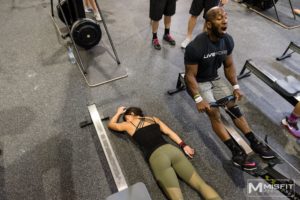
The Paced Rowing method was designed to incorporate multiple principles of adaptation in 3 phases. Each phase would contribute to the athlete developing coping skills for an overall positive adaptation. During the first phase, Paced Rowing focused on incrementalism or gradually increasing the demand of the task. The Recovery Phase, allowed the athlete to have direct and positive feedback on their performance. The Sprint to Finish allowed the athlete to realize they had much more left in the tank as well as to desensitize the athlete to the demands of sprinting a given distance under fatigue. Let me explain each phase in greater detail.
Phase One (Paced Rowing): The concept of incrementalism is very common and effective. In this case a simple linear progression was designed to allow the athlete to have success and to increase performance in small enough increments that it would remain achievable. The ultimate goal of this period was to simplify the task at hand and give the athlete concrete, tangible goals. With a smaller “micro goal” the athlete can develop coping mechanisms and strategies for success on a smaller scale. If successful, the athlete would row enough time at their goal pace to allow them to meet that goal.
Phase Two (Recovery Phase): The goal of phase two was to provide a period of immediate reflection on Phase One. This strategy was twofold. Psychologically it allowed for athletes to experience the positive emotions associated with achieving a “micro goal”. The idea is that would help them build confidence throughout the training program. From a physiological standpoint, it allows athletes to realize that their body could still function after meeting their “micro goals”. Athletes were able to come to terms with what their heart rate was like and what their legs felt like. Furthermore, it allowed athletes to prepare for the third phase.
Phase Three (Sprint to Finish): The sprint to finish was a specific distance that was designed to show the athletes that no matter what they felt like when they got to the sprint phase, they could hang on for 300m more. The significance of the distance in the end was that if you rowed 1500m at your goal 2k pace, you can afford to back off for 200m as long as you get back under your goal pace for the last 300m. The psychological significance of this phase is huge. We all have experienced panic when we realized we were 75% done with a workout and behind our goal pace. The sprint to finish equips the athlete with an effective method to counter that panic and still achieve their goal. Essentially it gives the athlete an ace up their sleeve so that they can make an early decision to lay it all out on the table and go for a PR.
It is worth noting that the success of the Paced Rowing method relies upon choosing an appropriate 2k Goal Pace. The initial goal distance at PR pace should be achievable with relative ease but become very difficult as you progress through the program into the days that require 1000m+ at the goal 2k pace. If an athlete fails to meet the required distance at the goal pace early on in the study the likelihood of overall success of the program is very small. In the case that you fail to meet the required distance at the goal 2k pace before Training Day 4, you are instructed to add 1-2 seconds to the 500m split pace and continue.
HOW DOES THIS APPLY TO ME?
To varying degrees both methods draw on the concept of habituation. This shows that a simple solution to getting better at something you suck at is to spend more time doing it. During that time your body and mind will develop strategies to perform better and minimize the adverse reaction to the task . It is up to you individually to determine which method can help you improve the most.
The Weakness Warm Up method is a great program to help athletes get better quantifying exactly how much better they will get. The Paced Rowing Program is a great tool to incorporate if you have a specific goal time in mind. While both methods can be effective, here is a quick checklist to help you determine which method will work best for you:
- I want to PR my 2k row but do not have a specific goal time in mind
- I have trouble looking at a task and envisioning success
- I attack workouts based on feel
- After workouts I often feel like I could have gone faster or done more
- When I get behind in a workout I often slow down
- My training results are largely dependent on how I feel that day
If the above generally describes you, the Weakness Warm Up method may be best for you.
- I have a specific goal 2k I would like to achieve
- If someone gives me a challenge I often meet it
- I will die trying to meet a goal I have set
- I am generally successful keeping below/above a certain goal on a rower or bike
- When I finish a workout I am confident I gave it everything I had
If the above generally describes you, the Paced Rowing Method method may be best for you.
